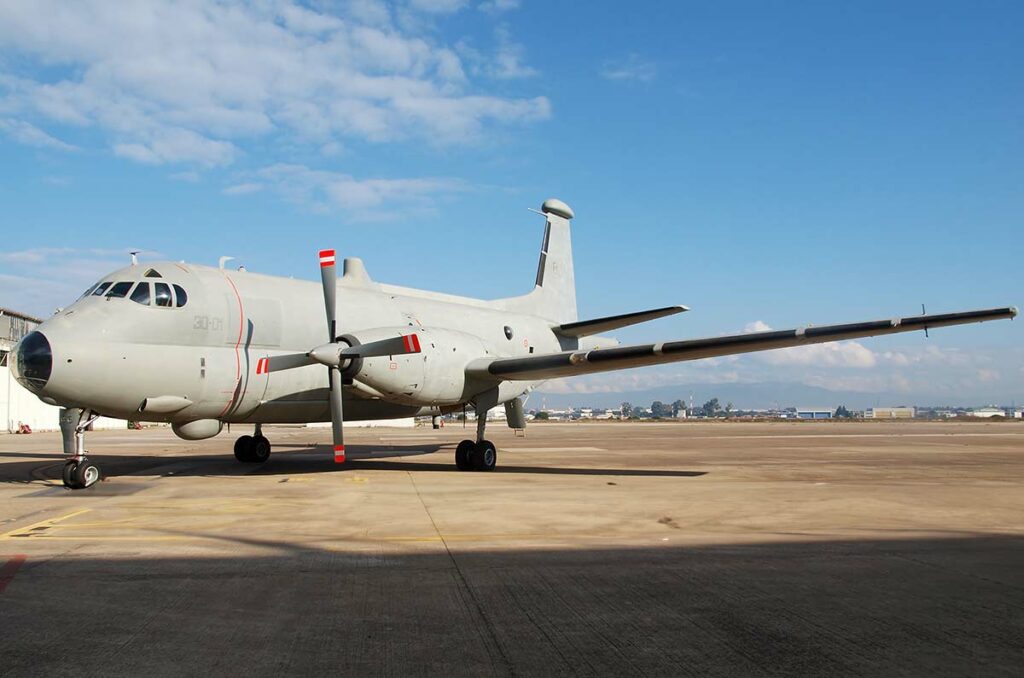The Dassault-Breguet Atlantique 2, a maritime patrol aircraft, excels in anti-submarine warfare, maritime surveillance, and intelligence gathering.
In Brief
The Dassault-Breguet Br.1150 Atlantique 2 is a sophisticated maritime patrol aircraft developed primarily for anti-submarine warfare (ASW), maritime surveillance, and reconnaissance missions. An advancement from its predecessor, the Atlantique 1, this aircraft incorporates upgraded avionics, improved sensors, and more efficient engines, enhancing its operational capabilities. It is equipped with a variety of sensors, including radar, sonar, and magnetic anomaly detectors, enabling it to detect and engage sub-surface, surface, and airborne threats effectively. With its extended endurance and considerable payload capacity, the Atlantique 2 plays a crucial role in naval operations, offering a versatile platform for a range of maritime security tasks.
The Dassault-Breguet Br.1150 Atlantique 2 represents a significant evolution in maritime patrol aircraft, designed to meet the demanding requirements of modern naval warfare and maritime security operations.
History of the Development of the Dassault-Breguet Br.1150 (Atlantique 2)
In the wake of evolving maritime threats during the latter half of the 20th century, there was an increasing demand for an advanced maritime patrol aircraft capable of addressing the sophisticated submarine and surface threats. The original Atlantique 1, developed in the 1960s, had proven its value, but technological advancements necessitated an updated version with enhanced capabilities. This led to the development of the Atlantique 2, initiated by Dassault-Breguet (now part of Dassault Aviation).
The program was launched to incorporate modern avionics, improved sensors, and better performance features into the proven design of its predecessor. The objective was clear: to create a versatile aircraft that could excel in anti-submarine warfare, maritime surveillance, and intelligence-gathering missions, equipped to operate in both open ocean and littoral environments. The Atlantique 2 first took flight on May 8, 1981, showcasing its advanced systems and improved performance.
Design of the Dassault-Breguet Br.1150 (Atlantique 2)
The design of the Atlantique 2 is a testament to its multifunctional role in maritime operations. It features a high-wing monoplane layout, ensuring stability and optimal sensor performance during low-altitude missions. The aircraft is powered by two Rolls-Royce Tyne turboprop engines, offering a balance between speed, range, and fuel efficiency.
The aircraft’s fuselage is specially designed to accommodate an extensive suite of sensors, including sonobuoys, radar, and magnetic anomaly detectors, integral to its ASW and maritime patrol roles. The spacious cabin allows for mission-specific equipment and a crew complement, typically comprising pilots, tactical coordinators, and sensor operators, enabling around-the-clock operations.
Despite its capabilities, the Atlantique 2’s design is not without drawbacks. Its size and mission-specific build limit its versatility compared to more flexible patrol aircraft, and the operational costs are significant, given its specialized mission equipment and the need for a large, highly trained crew.

Performance of the Dassault-Breguet Br.1150 (Atlantique 2)
The Atlantique 2 is characterized by its long endurance and wide operational range, capable of covering vast maritime areas without the need for in-flight refueling. The aircraft can reach speeds up to 660 km/h (410 mph), with a maximum range exceeding 9,000 km (5,592 miles), and an operational ceiling of 9,145 meters (30,000 feet).
When compared to contemporaries like the P-3 Orion or the Boeing P-8 Poseidon, the Atlantique 2 holds its own in terms of endurance and low-altitude sensor performance, though it may lack some of the higher-speed and higher-altitude capabilities of its more modern counterparts. The aircraft’s design ensures optimal performance in its primary ASW role, with a sensor suite and weapon systems tailored to detect and engage sub-surface targets effectively.
Variants of the Dassault-Breguet Br.1150 (Atlantique 2)
The primary variant of the aircraft is the Atlantique 2, which itself saw updates and modifications over its service life to incorporate technological advancements and operational feedback. While there aren’t multiple variants in the traditional sense, the aircraft experienced continuous upgrades, especially in its avionics, sensors, and mission systems, to enhance its operational effectiveness and extend its service life.
Military Use and Combat of the Dassault-Breguet Br.1150 (Atlantique 2)
The Atlantique 2 has been predominantly used by the French Navy, playing a pivotal role in France’s maritime patrol and ASW capabilities. It has been involved in numerous maritime security operations, including surveillance, search and rescue, and environmental protection missions. Although not typically used in direct combat, its intelligence-gathering capabilities have contributed significantly to NATO and coalition operations, offering crucial data for maritime situational awareness.
The aircraft’s armament, including torpedoes and anti-ship missiles, ensures it can engage a variety of maritime threats, complementing its surveillance and detection capabilities. Its contributions to multinational maritime security and its interoperability with other NATO assets underscore its value in contemporary naval operations.
The Dassault-Breguet Atlantique 2 stands as a pivotal maritime patrol and anti-submarine warfare aircraft, demonstrating significant advancements from its predecessor. Its specialized design, tailored for maritime operations, combines long endurance, advanced sensor capabilities, and a significant payload capacity, making it a key asset in modern naval fleets. Despite the emergence of newer maritime patrol aircraft, the Atlantique 2 continues to be relevant, underscored by its ongoing upgrades and the enduring need for dedicated, capable maritime patrol platforms in global naval operations.
Back to the Special Aircraft section